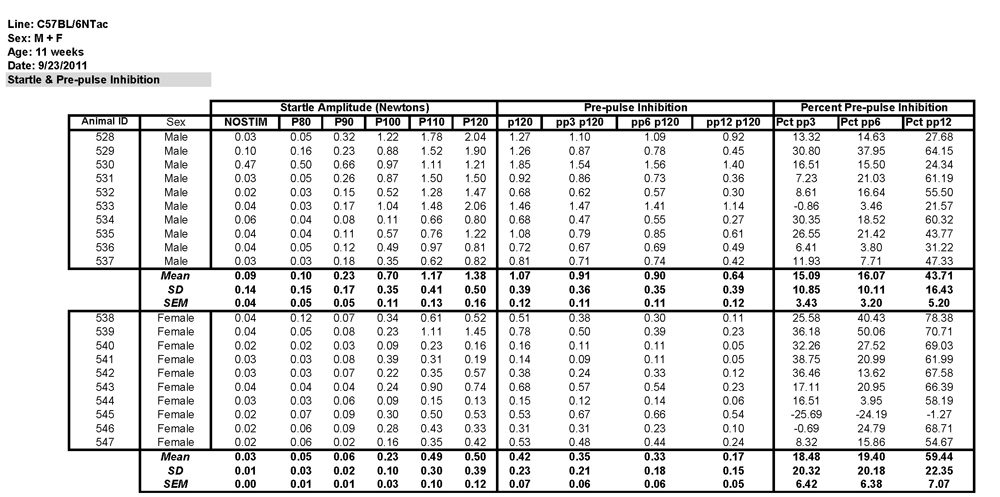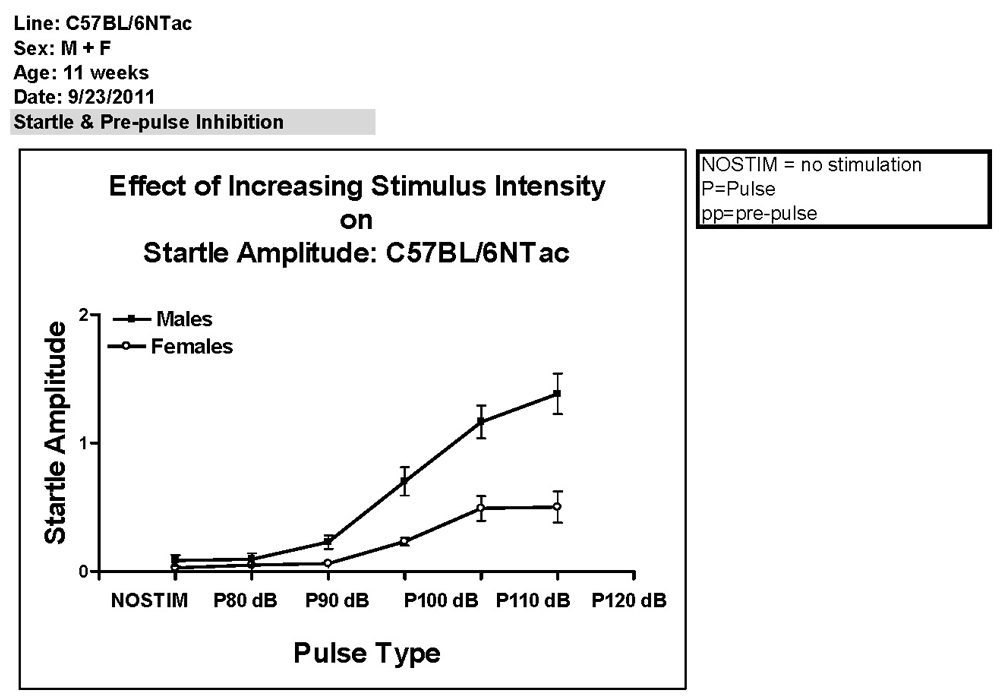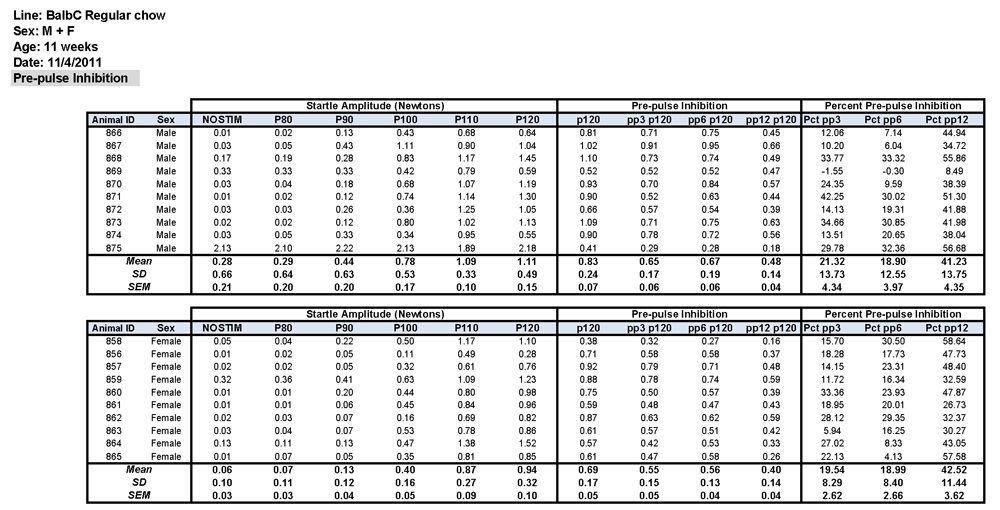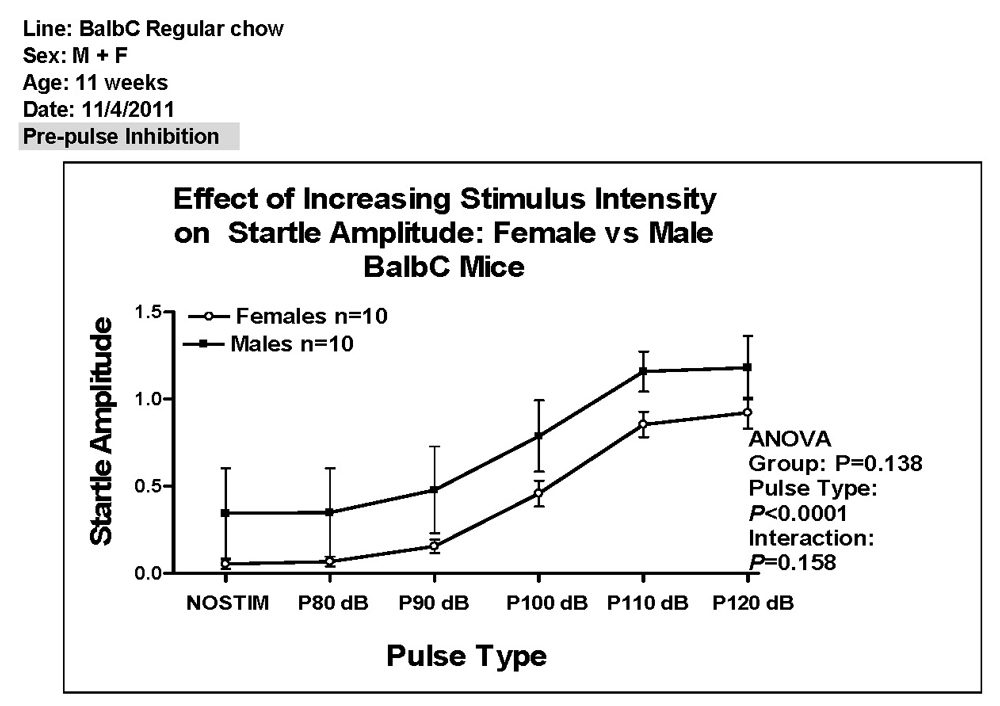- Home
- Resources
- Phenotypic Data
- Startle and Pre-pulse Inhibition
Startle and Pre-pulse Inhibition
Rationale:
The startle and pre-pulse inhibition (PPI) assay is a model to assess sensory processing. PPI is elicited by presenting a lower decibel stimulus pre-pulse prior to a startling stimulus pulse. Normally, these pre-pulses will inhibit the startle response. A decrease in the percent PPI indicates a deficit in sensorimotor gating. Sensorimotor gating refers to processes by which organisms filter the input of environmental information and gate or adjust their behavior. Sensorimotor gating deficits are associated with several neuropsychiatric disorders, such as schizophrenia and obsessive-compulsive disorder, and are theorized to underlie cognitive disturbances in these disorders. This assay also measures startle sensitivity. Startle sensitivity to different audible pulses (0-120 dB) is measured on Day 1. On Day 2 pre-pulses at lower decibels precede some of the 120 dB pulses to measure PPI to the startle response.
Methods:
Group housed male and female mice (11 weeks old) were used for these experiments. The mice were maintained on a light:dark cycle (6 am: 8 pm) with food and water available ad libitum. The mice were acclimated to the procedure room for at least 30 min, weighed and placed in the animal enclosures of sound attenuating chambers (StartleMonitor, Kinder Scientific).
The effects on baseline startle response were tested on the first day. The mice were allowed to acclimate for another 5 min inside the chambers. The mice were presented with 6 acoustic stimuli of different intensities (duration: 40 msec at 0, 80, 90, 100, 110, and 120 dB). A total of 30 trials were presented in a pseudo-randomized manner with an average inter-trial-interval (ITI) of 15 sec (range: 10-20 sec). Background noise of 70 dB was presented during the ITI. The StartleMonitor system and computer recorded the average amplitude of startle of mice within a 150 msec window following each of the acoustic stimuli.
The effects on pre-pulse inhibition were examined on the following day. The mice were acclimated to the chamber for 5 minutes and then presented with five different trials (no stimulus, where only background (70 dB) was presented; 120 dB pulse alone, pre-pulse of 3, 6, or 12 dB above background followed by 120 dB pulse). Each pre-pulse was of 20 msec duration and preceded the 40 msec long 120 dB pulse by 100 msec. The test session was presented in 12 blocks, each with ten trials. The first and 12th blocks consisted of 10 presentations of 120 dB pulses at an average ITI of 15 sec (range: 10-20 sec). Each 2nd to 11th block consisted of two presentations of each pulse type (no stimulation, 120 dB alone, pre-pulse of 3, 6, or 12 dB above background followed by 120 dB pulse) presented in a pseudo-random manner at an average ITI of 15 sec (range: 10-20 sec).















.jpg)

.jpg)
.jpg)
.jpg)
.jpg)





.jpg)


.jpg)
.jpg)

.jpg)


.jpg)





.jpg)

.jpg)






